
The picture of Hieronymus Bosch “Carrying the Cross” is distinguished by a painfully cold color intensity. And only on the face of Christ – his head is lowered, as if pressed by the point of intersection of diagonals – warm, human colors, a lively blush. But only the color and highlights it. For the facial features are related to all. And even the bright, almost white face of Saint Veronica of the same nature as other figures.
Bosch in the painting depicts Jesus Christ among the raging crowd, filling the space around him with malicious, triumphant faces. Bosch comes to the affirmation of the gloomy, irrational and low-lying nature of life. He not only expresses his world view, his sense of life, but gives her a moral and ethical assessment.
For Bosch, the image of Christ is the personification of boundless mercy, spiritual purity, patience and simplicity. He is opposed by the powerful forces of evil. They subject him to terrible tortures, physical and spiritual. Christ demonstrates to man an example of overcoming all difficulties.
The painting is considered a late work of Bosch. Scene, shown close-up, helps to achieve the effect of ruthless rage, distorting people’s faces. But the face of Christ, bent under the weight of burden, is serene, and his image, sealed against the background of the cloth of Saint Veronica, looks directly at the viewer. In the face of his fate Christ is dispassionate and unshakable, whereas a robber, also condemned to be executed, is pale with terror. In this work, Bosch applies a spectacular reception of a special style of Mannerism, which will then become fashionable in Antwerp.
By the end of the mature period, Bosch refuses from the compositions abounding with small moving figures, and returns – already on a new creative level – to simple construction, large forms and light tones of his early works. The accusatory orientation of the painting “Carrying the Cross” has a strong influence on the viewer. Fieran wrote about this thing: “All human here is atrophied, all the bestial is hypertrophied.” In a caricature manner, the artist multiplies low foreheads, thick lips, hooked beaks, broken noses, double and triple chins, thereby creating almost clinical images of stupidity, hypochondria, cruelty, cowardice, idiocy, cretinism, etc. The Scottish essence is obvious. ” According to its artistic qualities Ghent “Carrying the Cross” contradicts all the pictorial canons.
Bosch painted a scene, the space of which lost all connection with reality. The heads and torsos stand out from the darkness and disappear in the darkness. But whatever Bosch created, he is never trivial or rude. Ugliness, both external and internal, he translates into a certain higher aesthetic category, which even after six centuries continues to excite the minds and feelings.
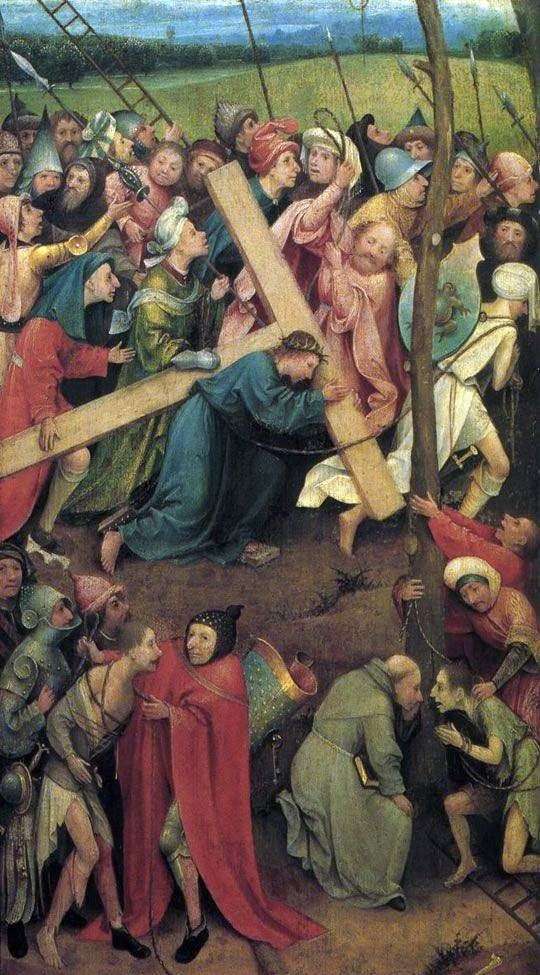 Carrying the Cross on Calvary by Hieronymus Bosch
Carrying the Cross on Calvary by Hieronymus Bosch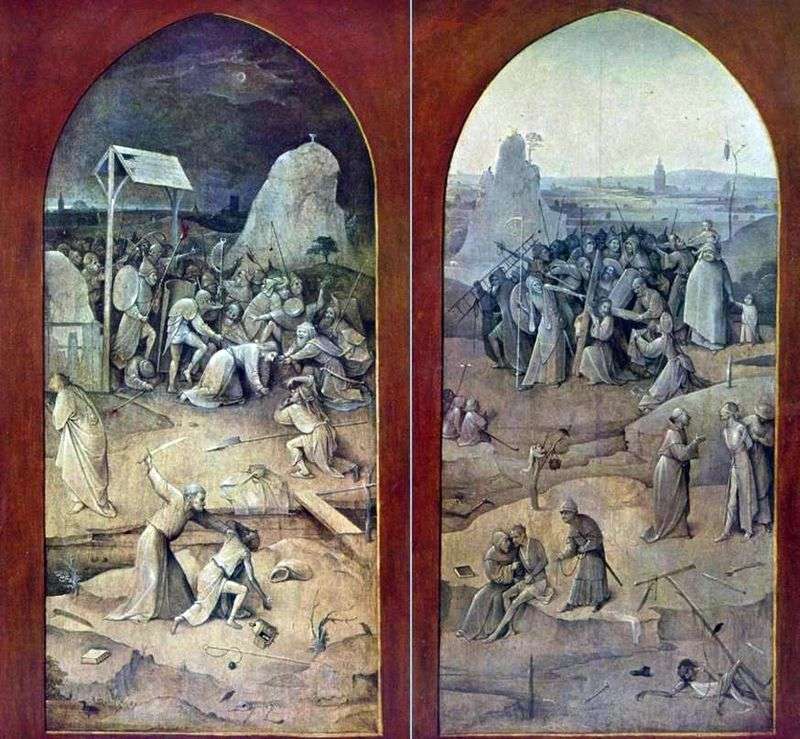 Taking in custody and Carrying the cross. The outer wings of the altar by Hieronymus Bosch
Taking in custody and Carrying the cross. The outer wings of the altar by Hieronymus Bosch The Crucifixion of Christ by Hieronymus Bosch
The Crucifixion of Christ by Hieronymus Bosch Christ carrying the cross by El Greco
Christ carrying the cross by El Greco Saint Christopher by Hieronymus Bosch
Saint Christopher by Hieronymus Bosch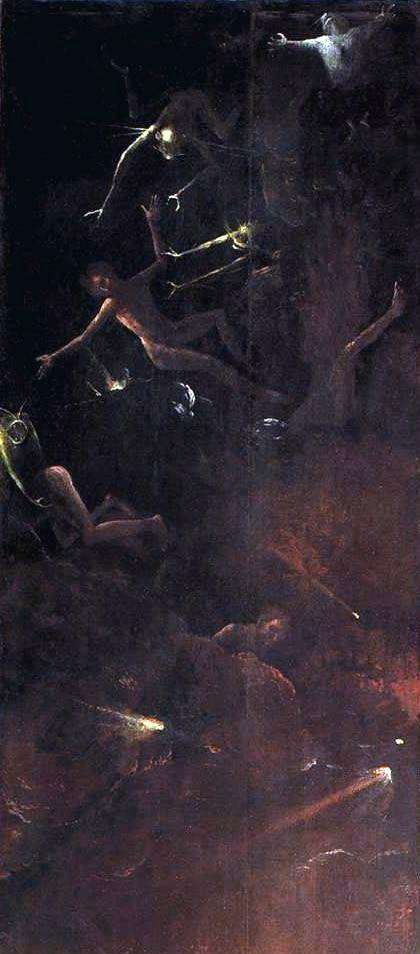 The overthrow of sinners, Visions of the Hereafter by Hieronymus Bosch
The overthrow of sinners, Visions of the Hereafter by Hieronymus Bosch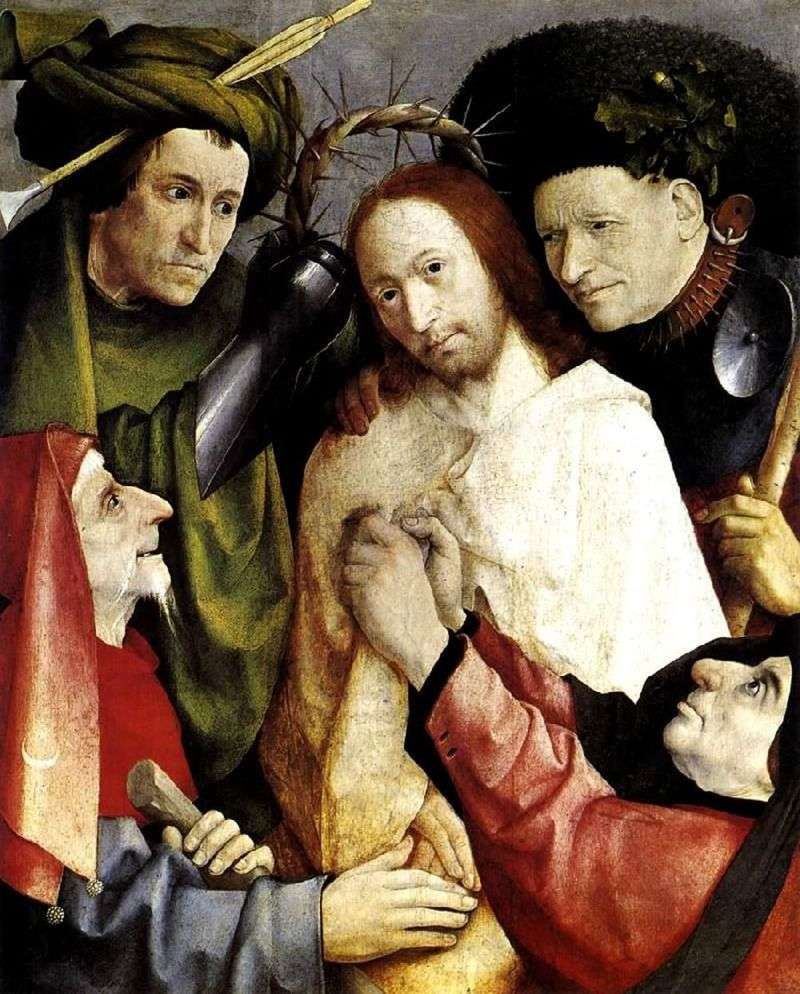 Crowning with thorns by Hieronymus Bosch
Crowning with thorns by Hieronymus Bosch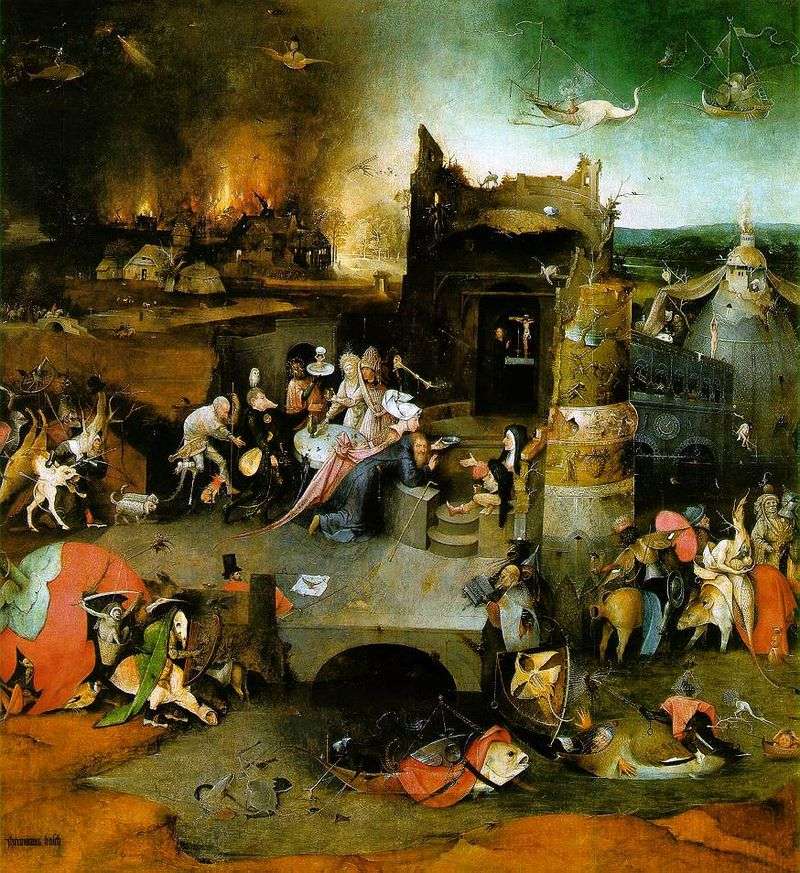 The altar of St. Anthony. The central part of the triptych is Hieronymus Bosch
The altar of St. Anthony. The central part of the triptych is Hieronymus Bosch